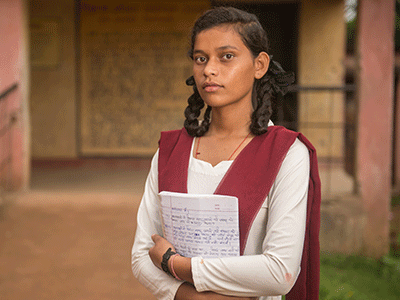Cover image: © UNICEF/NYHQ2012-0883/Sokol
About this course
This course introduces learners to behavioural drivers and the role they play in influencing behaviour. It uses the example of child marriage to illustrate concepts and principles , but the lessons gained can be applied to other sectors and issues, and the course can benefit anyone with an interest in behavioural drivers and social and behaviour change. Employing a story-based approach, the course takes the learner on a journey through two fictional scenarios illustrating the diverse drivers that shape decision-making and action in child marriage. The learner will become familiar with the Behavioural Drivers Model and the Social Ecological Model as frameworks to understand behavioural influences, the role of social and gender norms, reference groups and social networks in shaping behaviours, and illustrative approaches and activities to promote desired social and behaviour change. This course includes captioning for screen readers.
Learning Objectives
- Appreciate the complexity of behaviors and the many drivers that influence them, using child marriage as an example.
- Be able to define what is a behavioral driver.
- Describe how drivers operate across levels of the socio-ecological model, in real world scenario, specifically in the case of child marriage.
- Link behavioral drivers to social and behavior change interventions.
- Identify audience groups for a hypothetical intervention on ending child marriage.
- Define desired changes for different audience groups based on the evidence.
- List channels and approaches to reach different audience groups.
- Describe different activities to promote desired changes.
Audience
This course is open to anyone with an interest in learning about behavioural drivers and basic social and behaviour change. Example of learners include SBC practitioners, people working in child protection, harmful practices, gender and anyone wishing to understand the many factors that influence behaviour.
Methodology
This self-paced eCourse consists of three modules.
Each module alternates regularly between a story line and education/engagement
activities, to provide learners with the opportunity to reflect on the content.
Quiz-like questions within the Modules are for the benefit of the learner only
and will not be scored. The only scored section is at the end of Module 3 and
covers content featured in all three modules.
Duration
This course consists of three sequential modules, each taking approximately one hour to complete.
Structure
The Modules in this course are:
- Module 1: Introduction and Poonam’s Story: Behavioural drivers and how they influence behaviours.
- Module 2: Amina’s Story: The complexity of behaviour and the role of social and gender norms.
- Module 3: Desired Changes, Audience Groups and illustrative SBC approaches.
